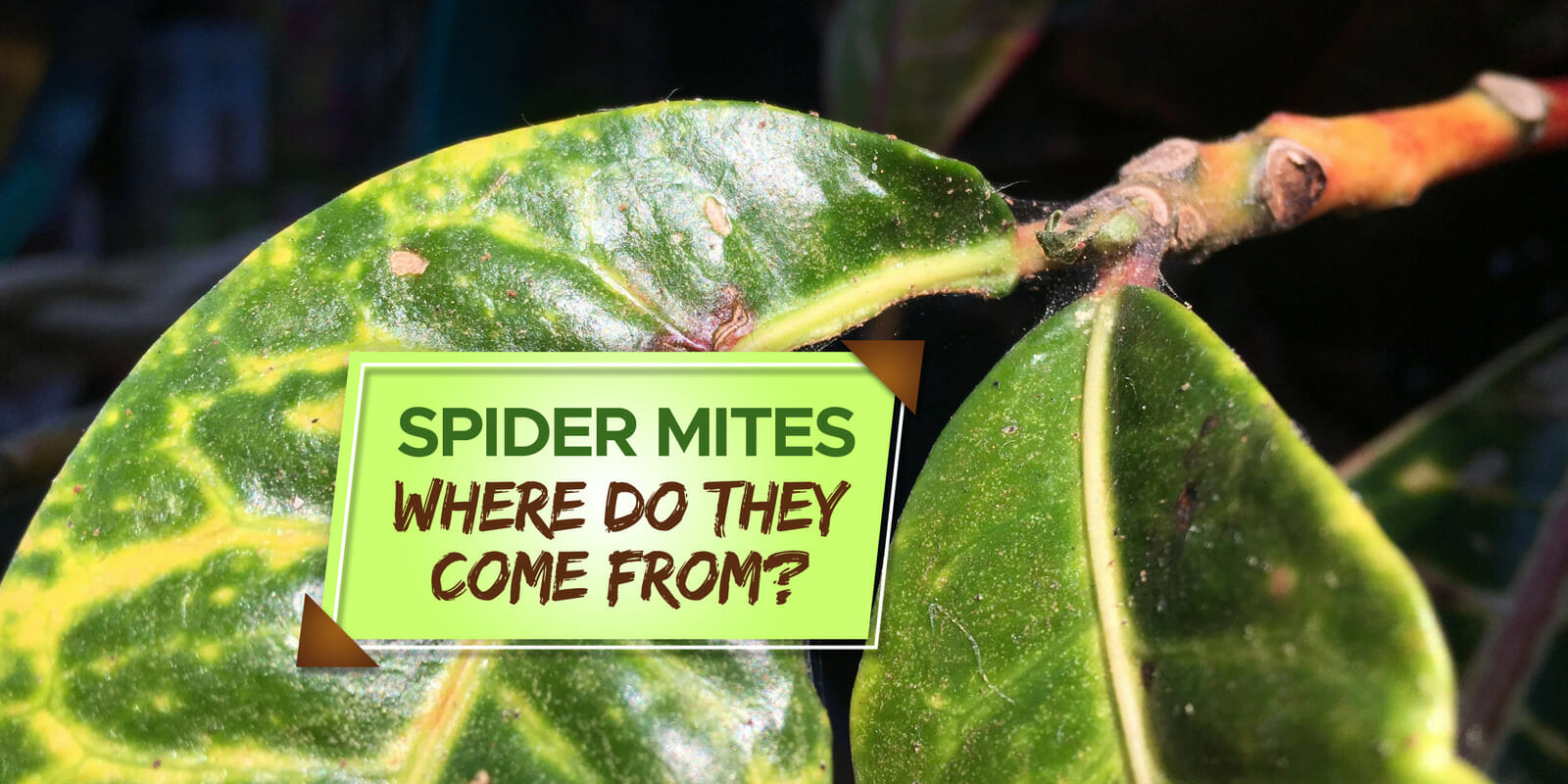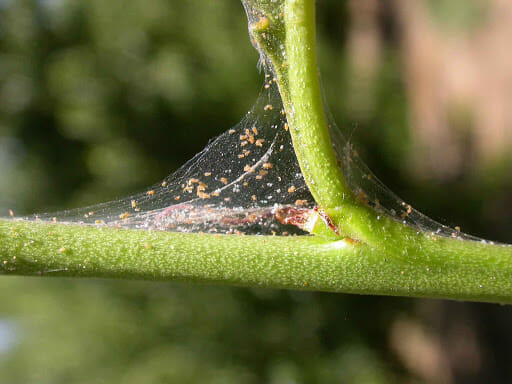These tiny arachnids generally enter the house unnoticed and often don’t get noticed until they have become a problem. Fortunately, there are ways to prevent spider mites from coming in and there are also ways to get rid of them.
Where do spider mites come from? Spider mites can get inside the house via anything or anyone that has been outdoors, they are extremely small and lightweight critters. They will normally get in via an already infected new plant, on the fur of your pet, on your clothing or if you’re unlucky, simply flew inside with a gust of wind.
Read on to learn more about where spider mites come from and what to do about it.
What Are Spider Mites and What Do They Look Like?
Spider mites are extremely tiny arachnids, not insects. They are so miniscule that to the naked eye it simply looks like white dust.
That is also why they can enter your house unnoticed. You might not know your houseplant has spider mites until you notice the ‘white dust’ moving or until there is a proper infestation on your plant.
These mini spiders live on plants, which is their food source. Spider mites weave intricate webs on their host plant which often looks like delicate white films on your plant, especially under the leaves.
The web itself is not what is so dangerous to your plants. Plants die because spider mites suck out the plant sap until there is nothing left.
Where Spider Mites Come From
Being so tiny, it is very easy for spider mites to be brought inside the house. They are often brought in on plants.
Spider mites can also come inside having stuck to a person or a pet. If you have been in an outdoor environment with plants, such as a park or urban garden, there may be spider mites stuck on your clothing or shoes.
Of course, simply going outside does not immediately mean you will come in contact with spider mites. They prefer specific climates.
These mini arachnids seek out dry and hot weather although they can handle some humidity, too. In such conditions, they can lay eggs and have those grow into adulthood in just 10 – 14 days.
Female spider mites lay up to 100 eggs during their lifetime. So, even though their life cycle is only 4 – 6 weeks, their colonies grow quickly.
If the infestation is not caught in time, they can start to spread to other houseplants. However, their presence is already noticeable well before that should happen.
How to Prevent Spider Mites
There are several ways to prevent spider mites from becoming an infestation.
Isolate New Plants
The best way to prevent spider mites is to carefully check a plant before you bring it inside your house. Look for white dust or the thin webbing, particularly on the underside of the leaves.
Whenever you bring a new plant inside, keep it in an isolated spot away from other houseplants for the first weeks. In case the new plant does have spider mites, they won’t spread to other hosts.
Keep Plants Healthy
Strong and healthy plants are more resilient and can even survive a small spider mite infestation. If your plant is healthy and you notice the presence of spider mites in time, it is stil possible to save it.
Remember that spider mites like dry and hot conditions. This means that plants sitting near sunlight and getting too little water are at the greatest risk.
Remove Dust
Spider mites seem to like dusty places, perhaps because it is more dry. That is why it is a good idea to remove dust from your houseplants, especially during the hotter summer months.
Take a damp cloth and wipe down the plant, focusing especially on the underside of the leaves. Don’t forget to properly wash the cloth after you are done.
What To Do When There Is a Spider Mite Infestation on Plants
If the houseplant is not completely covered in spider mites yet, it might be possible to save it. However, it is difficult to determine whether you have really gotten rid of all the spider mites.
The safest option is to get rid of the entire plant, especially when it has begun to shrivel and show yellow spots. Throw it away, don’t compost it.
Here are few ways you could save a plant from spider mites. With all these options, you should first start by washing the plant, preferably with a natural insecticide soap.
Prune the Affected Areas
If the infestation is concentrated on just a few leaves and the plant is otherwise strong, you can prune away the affected areas. However, it may be difficult to see if the spider mites are truly nowhere else on the plant.
Spray Neem Oil
Neem oil is often used as a natural insecticide and it works on spider mites, too. However, only spraying the plant with neem oil won’t work fast enough – don’t forget to wash the plant first.
Frequently Asked Questions:
Can Spider Mites Live Without Plants?
Spider mites feed on plants and like all living beings, need food to survive. These pests only live for 4 – 6 weeks so if they have not been in contact with a plant within this time period, they will die.
Can Spider Mites Live on Humans?
Although spider mites may be carried into the house on human clothing, they cannot live on humans. Spider mites do not feed on humans nor animals because their fangs are too small to pierce through skin.
Do Spider Mites Live on Dead Plants?
Spider mites do not live on dead plants because they need live plant to be able to feed. These pests eat plant sap and dead plants are already dried up.
Do spider mites live in soil?
Spider mites are not known to live in soil. They are typically found on plants, where they feed on the plant’s leaves. However, if there is a heavy infestation of spider mites on a plant, they may also be found in the soil around the plant.
Summary
Spider mites can come from any outside environments with plants. Since they are so lightweight and difficult to see with the naked eye they are easily brought into the house unnoticed.
The most common way spider mites enter the house is on plants, which they live and feed on. An infested plant may look like it has white dust on it or is (partially) covered with a white film of webbing.
Besides paying close attention to your plants, there are few ways to prevent spider mites because they are so difficult to see. Once you do notice their presence, it is important to act quickly.
Throwing away the plant is the safest option because it is difficult to know whether you have gotten rid of all the spider mites.





